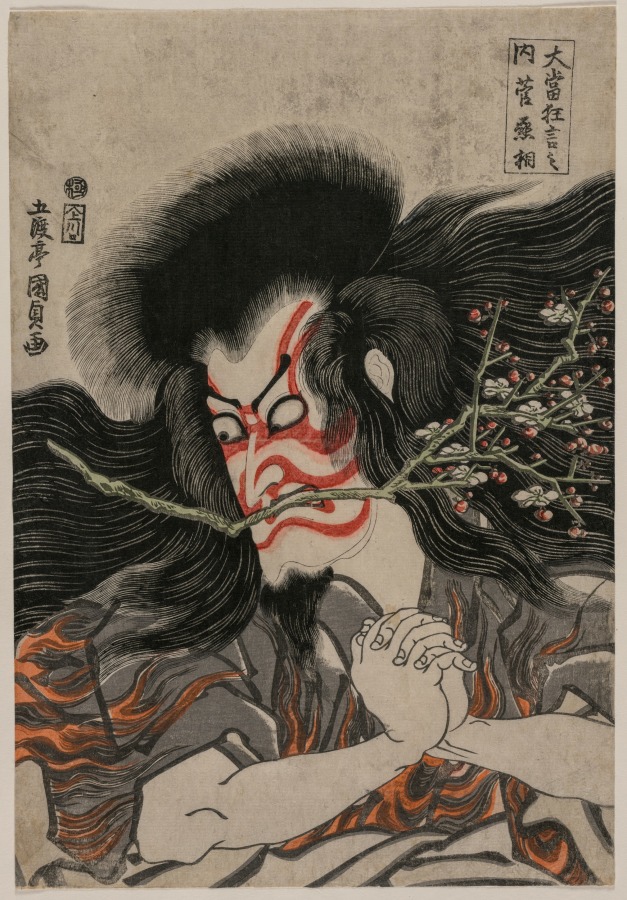| schema:description 10 | "culture: Japan, Edo Period (1615-1868)" |
| schema:description | "creditline: The Kelvin Smith Collection, given by Mrs. Kelvin Smith" |
| schema:description | "technique: color woodblock print, with mica" |
| schema:description | "collection: Japanese Art" |
| schema:description | "id: 152513" |
| schema:description | "type: Print" |
| schema:description | "inscription: Signature: Gototei Kunisada ga
Publisher: Kawaguchiya Uhei (Kawaguchi and emblem)
Censorship Seal: kiwame" |
| schema:description | "tombstone: Ichikawa Danjuro VII as Kan Shojo in the Mt. Tenpai Scene (from the series Famous Kabuki Plays), 1814. Gototei Kunisada (Japanese, 1786-1864). Color woodblock print, with mica; overall: 38 x 25.9 cm (14 15/16 x 10 3/16 in.). The Cleveland Museum of Art, The Kelvin Smith Collection, given by Mrs. Kelvin Smith 1985.333...(more)" |
| schema:description | "wall_description: Here, the actor plays the role of an exiled statesman, transforming himself into a vengeful thunder god. The red-and-white make-up style—<em>kumadori</em>, or "shadow painting"—is characteristic of the <em>aragoto</em> manner of portraying heroic roles. The crossed eyes and clenched mouth—in this role a plum blossom branch is added—demonstrates the conventional <em>mie</em> pose used by Kabuki actors to express intense emotion at the most dramatic moment in the play. The audience applauds the actor’s ability to hold this pose, influenced by the stylized movements of the puppets in the famous Bunraku theater. This sensational transformation of the hero is the high point of the scene....(more)" |
| schema:description | "measurements: Overall: 38 x 25.9 cm (14 15/16 x 10 3/16 in.)" |

